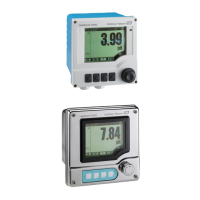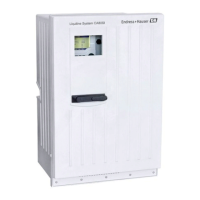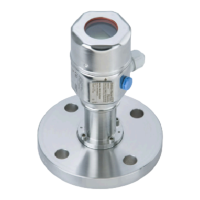Calibration and adjustment CM42-MAA101EBE00
8 Endress+Hauser
2.3 Notes on the calibration
The following rules apply for all parameters:
• Calibrate in a way that reflects conditions in the process.
– If the process medium is constantly moving, also move the calibration solution accordingly
(e.g. use a magnetic stirrer if calibrating in the laboratory).
– If your medium is relatively stationary, calibrate in solutions that are also stationary.
• Make sure that the samples are homogeneous for reference measurements, sample
calibration etc.
• Use the same menu settings as those in the process to perform the calibration.
Example: If you automatically compensate for the temperature effect during pH
measurement, switch on automatic temperature compensation for the calibration also.
It is advisable to perform the laboratory calibration using the "Memobase Plus" database
soware (→ "Accessories"). This improves the availability of your measuring points and all
the calibration and sensor data records are stored securely in the database.
2.4 Calibration intervals
2.4.1 Specifying the intervals
The service life of a pH glass electrode is limited. This is due, in part, to the deterioration and
aging of the pH-sensitive membrane glass. This aging causes the gel-like layer to change and
become thicker over time.
Symptoms of aging include:
• Higher membrane resistance
• Slow response
• Decrease in the slope
A change in the reference system (e.g. due to contamination, i.e. unwanted redox reactions at
the reference electrode) or electrolyte solution dissolving away in the reference half cell can
change the reference potential, which, in turn, causes a zero point shift in the measuring
electrode.
To ensure a high level of accuracy, it is important to readjust the pH sensors at set intervals.
The calibration interval depends heavily on the area of application of the sensor, as well as the
required level of accuracy and reproducibility. The calibration interval can vary between daily
and once every few months.
Defining the calibration interval for the process
1. Check the sensor with a buffer solution, e.g. pH 7.
Proceed as specified in Step 2 only if the value deviates from the set point. No
calibration/adjustment is necessary if the value is within the defined deviation tolerance
range (see the Technical Information for the sensor).
2. Calibrate and adjust the sensor.

